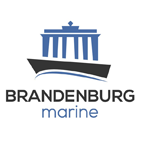Loss Prevention Advice
- Details
- News /
Following our previous circular dated 6th May 2025 regarding the security situation in Port Sudan, we would like to provide the following update:
The security situation in and around Port Sudan remains stable and under full control. Local authorities continue to ensure the safety and continuity of port operations across all terminals.
Key operational updates as of today:
- Northern Port Terminal: While no new vessels have berthed since yesterday, existing vessels remain in place and continue their operations normally, including discharging imports and loading exports.
- Southern Port Terminal: As previously noted, port activity has resumed. A new container vessel, has successfully berthed and initiated operations at the southern terminal, marking the return to operational status in this section.
We expect port activities to continue smoothly and efficiently. However, we advise all maritime partners to:
- Coordinate closely with local agents for vessel scheduling and operational timing.
- Anticipate possible minor delays as the port returns to full rhythm.
- Stay updated via official channels and verified correspondents.
- Details
- News /
Piracy risks in the Gulf of Mexico, escalating naval tensions between India and Pakistan, and wider geopolitical shifts affecting maritime operations across key chokepoints and shipping lanes.
Piracy persists in the Bay of Campeche
Maritime crime continues to plague Mexico’s oil-rich Bay of Campeche, with offshore platforms and support vessels facing increasing threats. On 2 May, the offshore supply vessel HANDIN TIDE successfully repelled a pirate boarding attempt 26 nautical miles west of Paraíso. Just days earlier, an attack on the Zacatecas platform near Dos Bocas was thwarted by crew using firefighting equipment, although the Mexican Navy arrived too late to intervene.
- Details
- News /
An uptick in cases where LNG ships have faced operational delays due to presence of LNG heavies.
As explained, “LNG heavies” are long chain hydrocarbons, which can create operational problems during shipping and handling. LNG is mostly made up of methane, but also includes small amounts of other hydrocarbons like ethane, propane, and butane, along with traces of nitrogen.
The problem arises when heavier hydrocarbons (called “C6+”) are present in higher amounts. Unlike methane, these compounds can solidify at the ultra-cold storage temperatures used for LNG (around -162°C), causing freezing and clogging in ship equipment like pipelines, pumps, or strainers.
- Details
- News /
Road safety studies underscores the significant risks posed by mobile phone use, and draws parallels with mobile phone use onboard.
Numerous studies have explored how phone use, both handheld and hands-free, affects driver behaviour. Understanding these parallels is crucial to raising the awareness among seafarers about the potential for similar impairments and risks to safety when using phones during shipboard operations.



